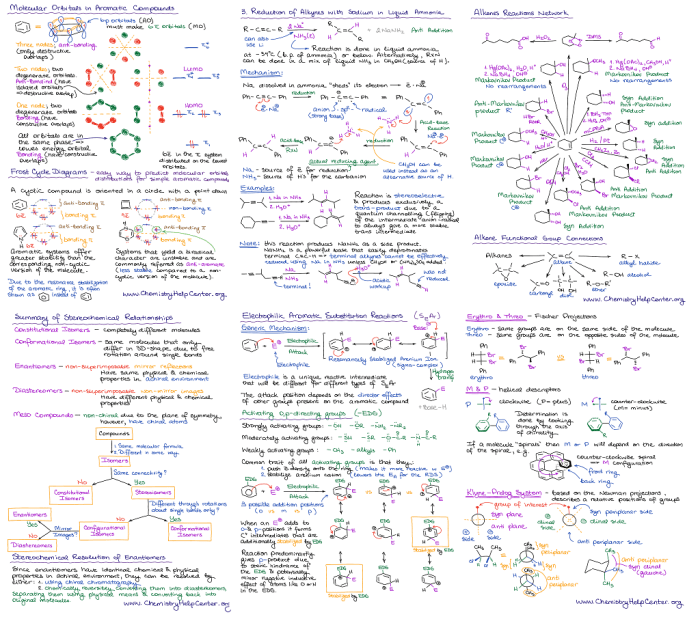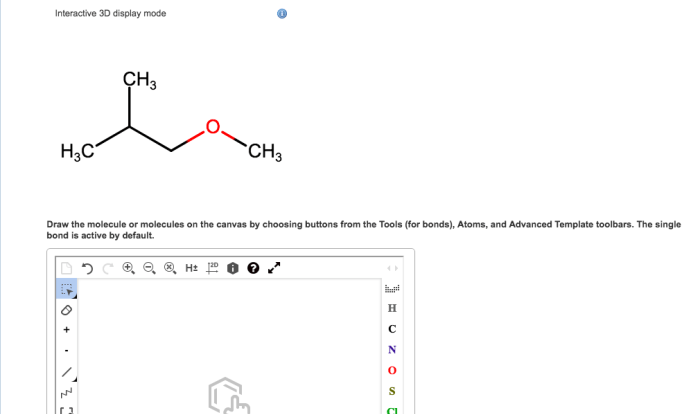Welcome to the organic chemistry reactions cheat sheet, your ultimate guide to mastering the complexities of organic chemistry. This comprehensive resource provides a clear and concise overview of the most common organic chemistry reactions, equipping you with the knowledge and understanding to excel in your studies and research.
Delving into the realm of organic chemistry reactions, this cheat sheet unravels the intricacies of functional group interconversions, reaction mechanisms, and the significance of reaction conditions. With its engaging explanations and illustrative examples, this guide empowers you to navigate the complexities of organic chemistry with confidence.
1. Introduction
Organic chemistry reactions are chemical transformations involving compounds containing carbon. These reactions play a crucial role in various fields, including medicine, materials science, and biotechnology.
A cheat sheet for organic chemistry reactions provides a concise summary of common reactions, including their mechanisms, reagents, and reaction conditions. This tool can serve as a valuable reference for students, researchers, and practitioners in the field.
2. Types of Organic Chemistry Reactions

Organic chemistry reactions can be classified into various types based on their mechanisms and functional groups involved. Some common types include:
- Nucleophilic substitution reactions
- Electrophilic addition reactions
- Radical reactions
- Elimination reactions
- Pericyclic reactions
3. Functional Group Interconversions

Functional group interconversions involve transforming one functional group into another. This process is essential for synthesizing complex organic molecules. Some common functional group interconversions include:
- Alcohol to aldehyde or ketone
- Alkene to epoxide
- Amine to amide
- Carboxylic acid to ester
- Nitrile to amine
4. Reaction Mechanisms
Reaction mechanisms describe the step-by-step process of an organic chemistry reaction. Understanding reaction mechanisms is crucial for predicting the products and optimizing reaction conditions. Common reaction mechanisms include:
- SN2 (nucleophilic substitution, second order)
- SN1 (nucleophilic substitution, first order)
- E2 (elimination, second order)
- E1 (elimination, first order)
- Diels-Alder reaction
5. Reagents and Catalysts
Reagents are substances that participate in chemical reactions to bring about desired transformations. Catalysts are substances that increase the rate of a reaction without being consumed. Some commonly used reagents and catalysts in organic chemistry include:
- Sodium borohydride (reducing agent)
- Potassium permanganate (oxidizing agent)
- Hydrochloric acid (acid catalyst)
- Triethylamine (base catalyst)
- Palladium (hydrogenation catalyst)
6. Reaction Conditions

Reaction conditions play a significant role in determining the outcome of an organic chemistry reaction. Important reaction conditions include:
- Temperature
- Solvent
- pH
- Concentration
- Time
7. Applications of Organic Chemistry Reactions

Organic chemistry reactions find applications in numerous fields, including:
- Medicine:Synthesis of pharmaceuticals, antibiotics, and other drugs
- Materials science:Development of polymers, plastics, and composites
- Biotechnology:Production of enzymes, antibodies, and other biomolecules
- Energy:Conversion of biomass into biofuels
- Agriculture:Synthesis of pesticides, herbicides, and fertilizers
Q&A: Organic Chemistry Reactions Cheat Sheet
What is the purpose of an organic chemistry reactions cheat sheet?
An organic chemistry reactions cheat sheet provides a quick and accessible reference to the most common organic chemistry reactions, their mechanisms, and reaction conditions. It serves as a valuable tool for students, researchers, and practitioners to refresh their knowledge, troubleshoot reactions, and optimize their experimental design.
How can I use the organic chemistry reactions cheat sheet effectively?
To use the organic chemistry reactions cheat sheet effectively, familiarize yourself with the different sections and the information they provide. Use it as a quick reference during problem-solving, exam preparation, or literature review. Regularly reviewing the cheat sheet will help reinforce your understanding and improve your recall of key concepts.
What are the limitations of an organic chemistry reactions cheat sheet?
While organic chemistry reactions cheat sheets provide a concise overview of common reactions, they cannot replace a comprehensive textbook or in-depth knowledge of the subject. They are best used as a supplement to your studies and as a quick reference for specific information.
